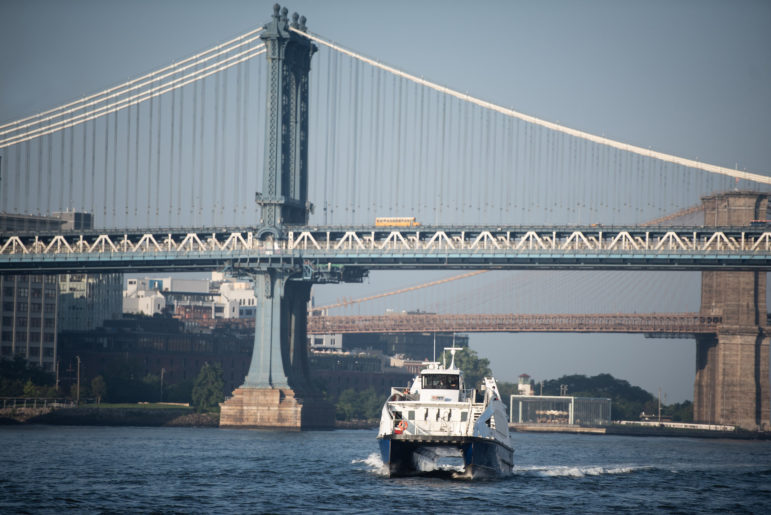
Michael Appleton/Mayoral Photography Office
A boat travels the Lower East Side Route, which launched in 2018.
Not even two years old, the five-borough NYC Ferry service is a booming success that has far exceeded projections and has changed the lives of hundreds of thousands of New Yorkers. Like any two-year-old, it has had growing pains, but let’s not throw the baby out with the river water – any growing pains have been a product of its success. We need to nurture this vital new transportation option for our growing city.
Serving transit-starved working-class neighborhoods such as Red Hook, Astoria, and Soundview, the new ferry system has cut previously intolerable commute times in half. The fare is equal to a subway ride, the same cost no matter if you are commuting from the Rockaways or just across the East River. Ridership has far exceeded the original projection of 4.6 million passengers annually. When NYC Ferry expands, as promised by the Mayor earlier this year, more than 11 million people will be served by the ferries on our blue highways.
It is a clean, efficient, and amazingly on-time commute: 20 minutes between Astoria and East 34th Street and less than an hour between Far Rockaway and Wall Street. On-time performance is an unheard of 94.6%.
The maturing ferry system brings important benefits in addition to dependable commutes. Local shops and eateries near ferry stops have noted increases in foot traffic. Passengers rhapsodize about the fresh air and scenery.
From an environmental perspective, ferries offer resiliency and transit redundancy in this era of climate change. We’ve seen waterborne transit provide critical transportation over and over in times of crisis—after a blackout, during transit strikes, evacuating after the horror of 9/11—and we are reminded that we are a city of water, separated by our waterways but connected by boats.
Perhaps most important to note as critics decry the subsidies granted to NYC Ferry: boats, docks, and terminals can be established relatively fast and are exceptionally cheap in transit dollars. Unlike subway expansion, which famously takes decades to complete, ferry terminals and vessels can be up and running within a year or two—in the case of NYC Ferry, they actually launched rapidly. And, seriously: the cost of a few million to build a new ferry stop might buy you inches of the Second Avenue subway line.
Yes, the per-passenger operating subsidies for the new ferries are expensive, but as the system grows and ridership continues to increase, the per-passenger subsidy will decrease. If the city wants to augment ferry service revenue in the future, perhaps tourists could be charged more, or fares might increase for weekend passengers. We can be creative about increasing revenue but maintain the core value of an affordable ride for New Yorkers going to and from their jobs.
The future looks bright for the ferries. The New York City Economic Development Corporation’s latest round of solicitations for new ferry routes earlier this year drew 3,500 suggestions of neighborhoods and sites to include in the study from eager citizens and elected officials.
As the system grows, let’s address the issues that need to be fixed and continue to encourage transparency in the decision-making process, but let’s not lose sight of the extraordinary transportation access and resiliency that NYC Ferry is bringing to New Yorkers in all five boroughs.
Roland Lewis is CEO and president and Karen Imas is senior director of programs at the Waterfront Alliance.









One thought on “Opinion: For Resilient, Reliable Transport Across the City, Look No Further Than Ferries”
Pingback: April 26, 2019 – Weekly News Roundup - New York, Manhattan, and Roosevelt Island | Manhattan Community Board 8